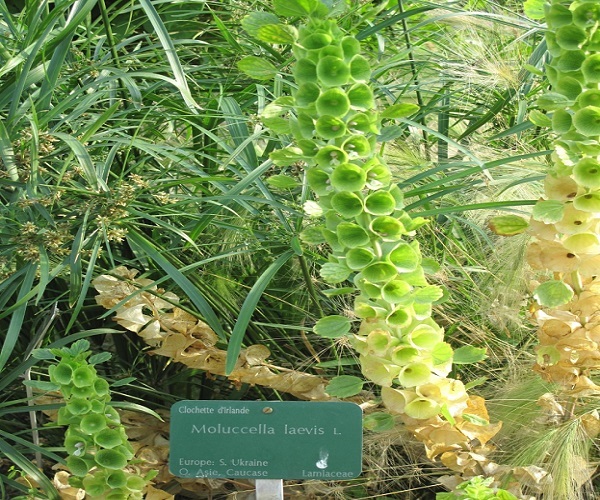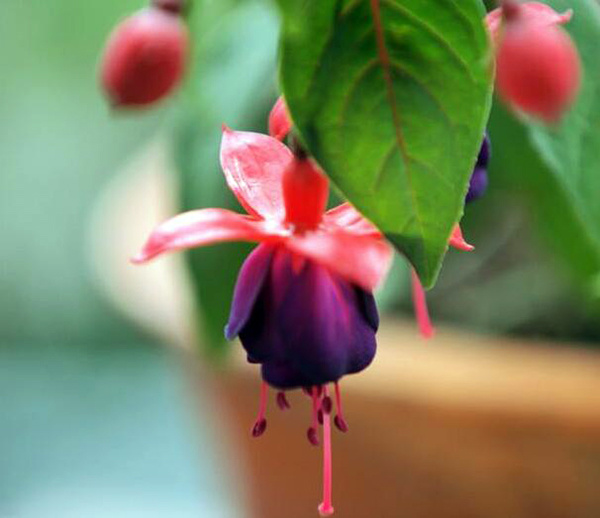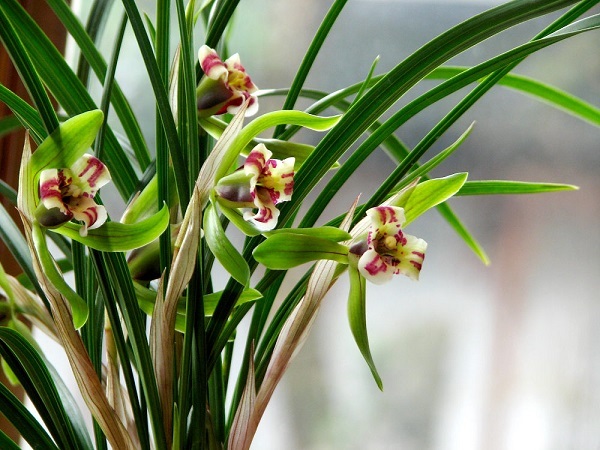The planting method of shell flower

1, reproduction: shell flowers can be sowed to prevent reproduction, generally in spring, summer, autumn, if the need for uniform supply of flowers, easy to watch, can be sown in batches.
2. Potted soil: the size of the flowerpot depends on the number of seeds. The seeds are triangular. Usually 10-15 seeds can be planted in pots with a diameter of 15cm. Shell flower is suitable for cultivation in fertile, easy to drain, loose soil, avoid clayey soil, so as not to affect the growth and slow down its growth. The cultivation soil can choose the vegetable garden soil with sufficient nutrients which is easy to drain, pour enough water, and cover the thin soil above, and the humidity of the border surface is always in the suitable range.
3. Seedlings: about 7-10 days after sowing seeds, seedlings will germinate. Seedlings generally 10~15cm and grow slowly. It usually takes 20 to grow true leaves. When the number of true leaves reaches 5-6, they can be transplanting with soil. In order to promote branching, it is necessary to take a heart out of it.
4. Illumination: shell flowers need sufficient sunlight to facilitate the growth of the plant, and should not be exposed to the sun in summer.
5. Temperature: the best temperature for shell flower sowing is 15-25 ℃, which is beneficial to germination, and the suitable temperature for growth period is 20-30 ℃.
6. Water and fertilizer: the seeds are watered once a day during germination, and the flowerpots are placed in a cool place. After transplanting, more watering and fertilization is needed, and fertilizer is applied every 15 to 30 days to promote growth until the plant blossoms.
7. Diseases and insect pests: shell flowers are relatively strong and easy to manage, and they are not common to be infected with diseases and insect pests, but to control leafminers and insect pests, they will occur occasionally.
The planting method of shell flower the function of shell flower
The shell flower can also be called the elephant ear and collar flower, which is named because its leaves are similar to the shell and the flower is similar to the collar. Today, we are going to tell you about the planting method of the shell flower and the function of the shell flower.
The planting method of shell flower
Reproduction: shell flowers can be sowed to prevent reproduction, generally in spring, summer, autumn, if the need for uniform supply of flowers, easy to watch, can be sown in batches.
Potted soil: the size of the flowerpot depends on the number of seeds. The seeds are triangular. Usually 10-15 seeds can be planted in pots with a diameter of 15cm. Shell flower is suitable for cultivation in fertile, easy to drain, loose soil, avoid clayey soil, so as not to affect the growth and slow down its growth. The cultivation soil can choose the vegetable garden soil with sufficient nutrients which is easy to drain, pour enough water, and cover the thin soil above, and the humidity of the border surface is always in the suitable range.
Seedlings: about 7-10 days after sowing seeds will germinate, seedlings generally 10~15cm, grow slowly, usually 20 to grow true leaves, wait until the number of 5-6 leaves, you can transplant with soil. In order to promote branching, it is necessary to take a heart out of it.
Lighting: shell flowers need to have enough sunlight to facilitate plant growth, be careful not to be exposed to the sun in summer.
Temperature: the best temperature for shell flower sowing is 15-25 ℃, which is beneficial to germination, and the suitable temperature for growth period is 20-30 ℃.
Water and fertilizer: water the seeds once a day during germination and put the flowerpot in a cool place. After transplanting, more watering and fertilization is needed, and fertilizer is applied every 15 to 30 days to promote growth until the plant blossoms.
Diseases and insect pests: shell flowers are relatively strong and easy to manage, and they are not common to be infected with diseases and insect pests, but to control leaf miners and insect pests, they will occur occasionally.
The function of shell flower
1. Appreciate the greening
The shell flower has cultivated many horticultural varieties, and its calyx is green, yellow and white, mostly green, and the flowers and leaves are shell-shaped or similar to flat trumpet-shaped, with a special shape, giving people a fresh and elegant feeling. Naked planting or potted plants all have a good ornamental. In addition, it is a good flower arrangement material, which can be used to make dried flowers.
2. Purify the air
As a green plant, shell flower also plays a good role in regulating the air. A pot of shell flowers can absorb 120 grams of carbon dioxide through photosynthesis and release 56 grams of oxygen to purify indoor air.
The planting method of shell flower how to grow shell flower?
Shell flower, also known as collar flower, elephant ear, is an one-or two-year herb of the genus Labiatae. The shell flower shape is peculiar, the Corolla lip-shaped, the flower looks like a shell. Shell flowers are often used for flower arrangement, can also be used as dried flowers, potted culture is also a good choice. So, how to grow shell flowers? The following editor will share with you the planting method of shell flowers.
The heart-shaped leaves of shell flowers are emerald green and the flowers are unique in shape. it is a very good ornamental plant. Shell flowers like sunny environment and are suitable for growing in well-drained soil.
I. Culture methods of shell flowers
Aquaculture shell flowers should pay attention to watering, although shell flowers like wet soil, but too much watering will cause shell flowers rotten roots. According to the degree of dryness of the soil to water, basin soil is not dry do not water, each watering should be thoroughly.
Flowerpots: potted shellfish flowers can be selected according to the number of seeds. Generally, flowerpots with a diameter of 15 cm can hold 10 to 15 shellfish seeds.
Soil: shell flowers like well-drained soil, usually spread pebbles at the bottom, and then spread sand on top. Then sow the seeds in the basin soil and cover it with a thin layer of sand to keep the soil moist.
Watering: shell flower seed germination period can be watered once a day to ensure the seed absorption of water, at this time to put the flowerpot in a cool place, can not see the light. When the seeds germinate, the watering time is adjusted according to the soil moisture. If it is not dry or irrigated, it will be watered thoroughly.
Temperature: the suitable sowing temperature of shell flower is 15-25 ℃. Generally, the shell flower will sprout in about a week to half a month.
Fertilization: when the shell flower grows to 5-6 true leaves, it can be transplanted. Fertilization began after transplanting survived, once every half a month, and stopped fertilizing after the shell blossoms.
Diseases and insect pests: shell flowers grow strong, few diseases and insect pests occur, but we should pay attention to the harm of leaf miners.
Second, the ornamental function of shell flower.
The calyx of shell flower is mostly green, white and yellow, the calyx is shaped like a trumpet, the flower shape is strange, fresh and elegant, and the ornamental value is high. Shell flower is a very popular and important flower arrangement material, which can also be used as dried flowers and potted ornamental plants. Raising a potted shell flower at home can create a simple, elegant and pure atmosphere for the whole home.
Third, the function of shell flower in purifying air.
We all know that plant photosynthesis can absorb carbon dioxide and release oxygen, and two shellfish flowers are good at purifying the air. Each shell flower can absorb 150g carbon dioxide and release 56g oxygen every year, so it is a very green plant.
This is the end of the planting method of shell flowers. You are welcome to continue to pay attention to the succulent flower beds and learn more about the planting methods of herbaceous flowers.
- Prev

The culture method of hanging bell flower
The soil requires that the substrate of potted bell flower should be cultivated with fertile, loose and well-drained soil. generally, rotten leaf soil and Gaza loam soil can be evenly mixed with rotten organic fertilizer and phosphate fertilizer, and there is no need to apply base fertilizer to avoid rotting roots. The clayey and heavily consolidated soil is disadvantageous to the growth of the bell flower, let alone the seedlings that have just survived cuttage.
- Next

What if orchids don't blossom?
The main results are as follows: 1. Light is the main factor to promote the bud formation of orchid plants. Flower leaves are soft and moderate green, indicating normal light; dark green and soft leaves, indicating the need for more light; yellowish leaves, indicating less light. 2. If the temperature promotes the flowering of orchids, it is necessary to make the temperature difference between day and night about 10 ℃.
Related
- Fuxing push coffee new agricultural production and marketing class: lack of small-scale processing plants
- Jujube rice field leisure farm deep ploughing Yilan for five years to create a space for organic food and play
- Nongyu Farm-A trial of organic papaya for brave women with advanced technology
- Four points for attention in the prevention and control of diseases and insect pests of edible fungi
- How to add nutrient solution to Edible Fungi
- Is there any good way to control edible fungus mites?
- Open Inoculation Technology of Edible Fungi
- Is there any clever way to use fertilizer for edible fungus in winter?
- What agents are used to kill the pathogens of edible fungi in the mushroom shed?
- Rapid drying of Edible Fungi

